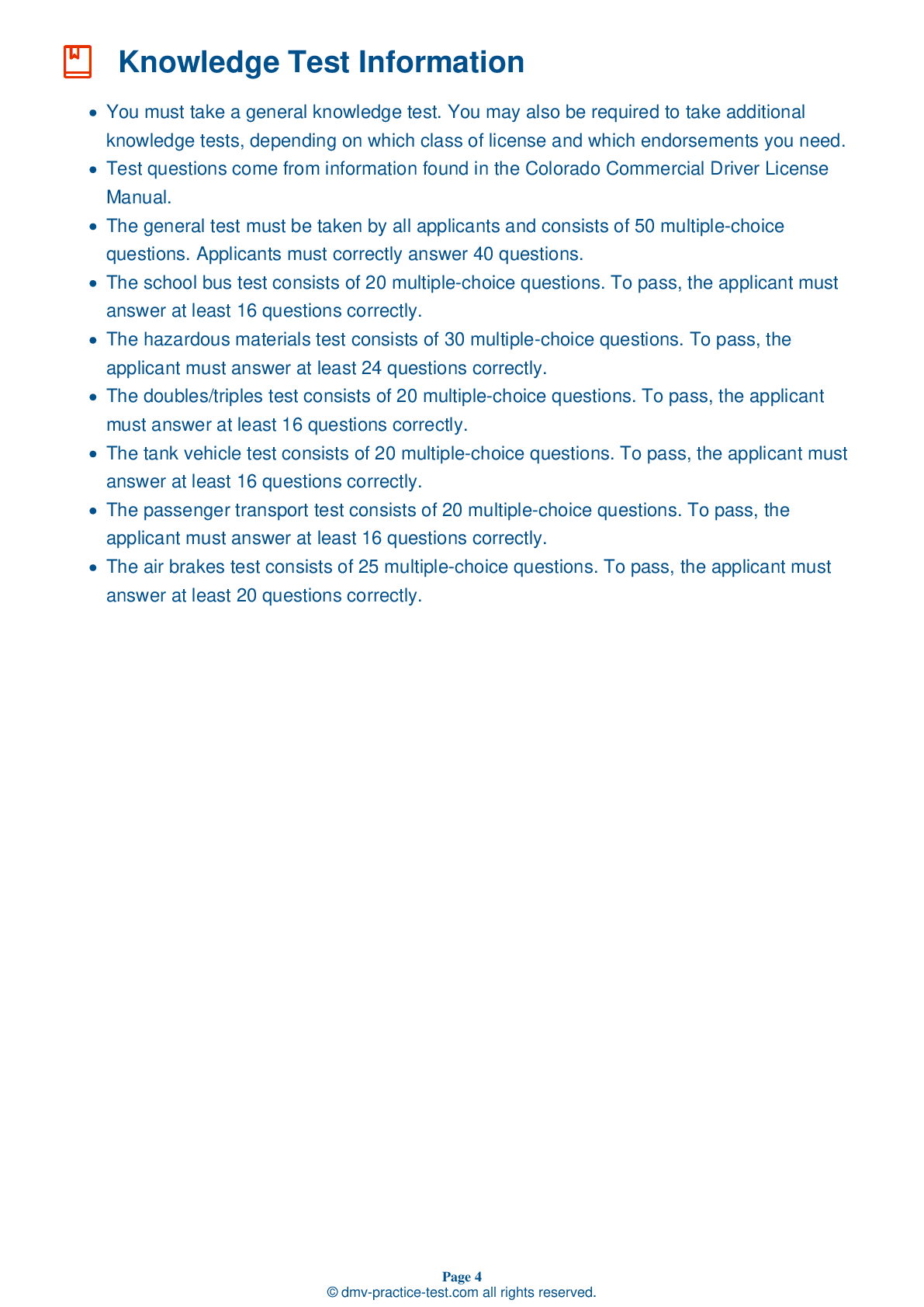Hazmat Test | Colorado 2025 #1 Page 4 of 5
On our website, we provide FREE practice - CDL hazmat test online! The official exam test consists of several obligatory parts, with all of them checking your knowledge of different blocks of road rules. If you need to obtain a CO CDL hazmat endorsement in 2025, practice as much as possible. Free sample tests published on our website will help you check and improve your knowledge and boost your grades. Please bear in mind that Colorado requirements for issuing a hazmat endorsement for CDL may vary from those established in other states.
19 . Placarded vehicles must carry fire extinguishers with a minimum rating of:
The power unit of a placarded vehicle must be equipped with a fire extinguisher with an Underwriters Laboratories (UL) rating of 10 B:C or more.
20 . Identification numbers, shipping names, and hazard classes:
Identification numbers, shipping names, and hazard classes must never be abbreviated when listed on a shipping paper. The only exception to this is if the abbreviation is specifically authorized in the hazardous materials regulations.
21 . If there is a collision involving a vehicle transporting Class 1 explosives, the driver should:
If you are driving a vehicle that is transporting Class 1 explosives and it is involved in an accident, you should warn others of the danger, keep bystanders away, and not allow smoking or open fires near the vehicle. Before separating the vehicles involved in the collision, remove all explosives and place them at least 200 feet away from the vehicles and any occupied buildings.
22 . If transporting chlorine, what must be kept in the vehicle?
A driver transporting chlorine in cargo tanks must keep an approved gas mask and an emergency kit in their vehicle.
23 . When transporting Division 1.1 materials, the floor liner should be:
Use a floor lining when transporting Division 1.1, 1.2, or 1.3 materials. The floors should be tight and the liner must be made from either non-metallic material or non-ferrous metal. Non-ferrous metals are metals that do not contain iron or iron alloys.
24 . Placards must be placed:
Hazardous materials placards must be positioned so any words or numbers can be read from left to right. They must be at least three inches away from any other markings.
See the exact questions that will be on the 2025 Colorado DMV exam.
99.2% of people who use the cheat sheet pass the FIRST TIME
Lillian MCcranie explains how our CDL study guide was helpful in passing the exam and recommends it to everyone.
Cameron tells us how he purchased the CDL exam, and found it to be a useful tool which helped him pass the exam and find a job.



